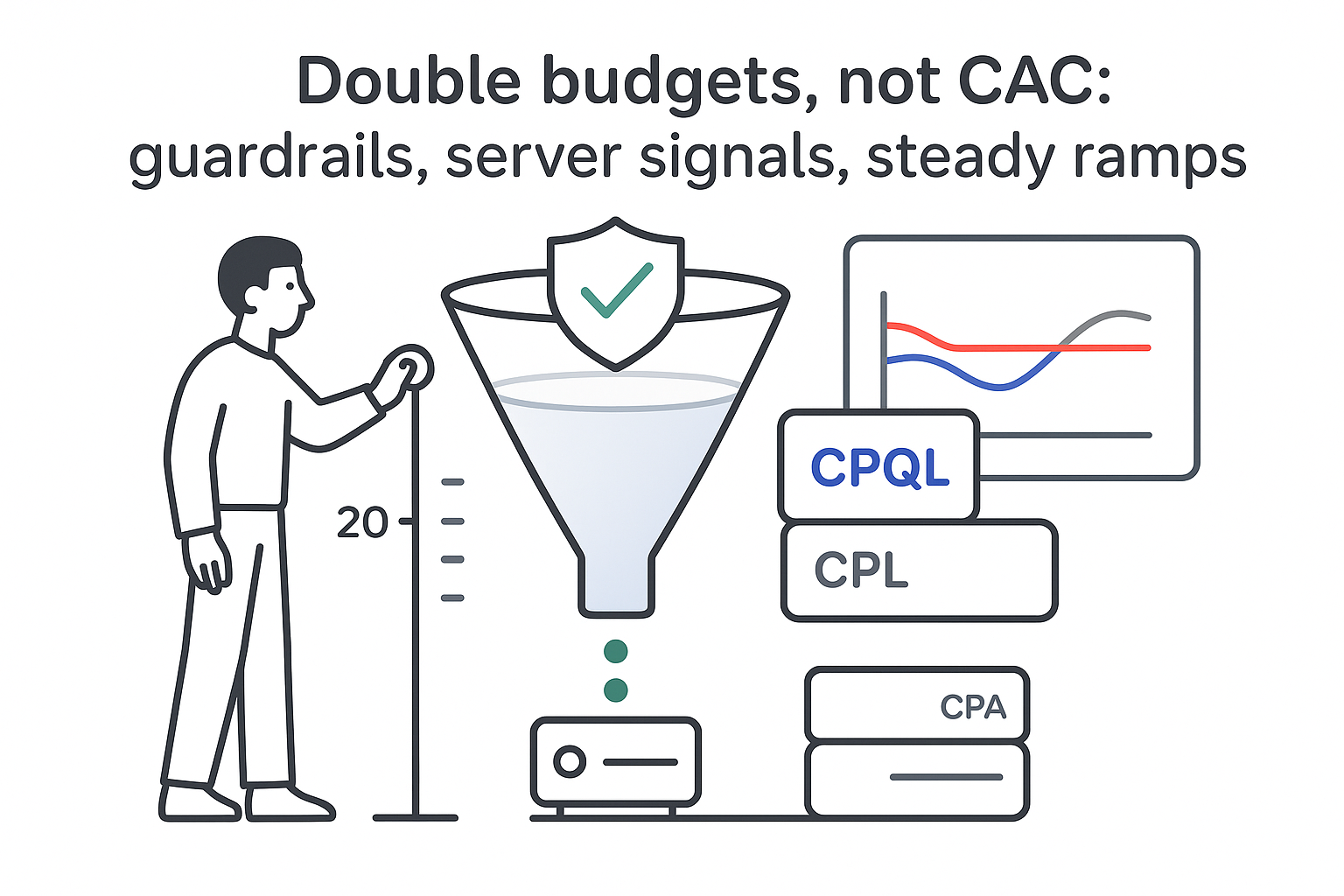I want profit, predictability, and less chaos in the warehouse - without babysitting spreadsheets, patching stockouts, or padding budgets just to be safe. SKU rationalization is how I get there: trim the long tail, surface what actually drives margin, and give the team a simpler, faster path to fulfillment. Done well, it delivers changes I can measure this quarter, not just someday.
SKU rationalization benefits
SKU rationalization focuses the catalog on products that earn their space, cash, and attention. When I do it right, it tightens inventory, speeds up decisions, and simplifies operations. For CEOs and operators who care about ROI, here is what typically moves the needle:
- 10–30% reduction in inventory holding costs by cutting slow movers and rebalancing safety stock
- 5–15% lift in gross margin per SKU by eliminating margin-draining variants and fee-heavy items
- 15–40% improvement in working capital availability by freeing cash tied up in dead stock
- 10–25% faster pick and pack times as SKU count and slot complexity drop
- Fewer stockouts on A items by redirecting capital and attention from C items
- Cleaner inventory records and fewer adjustments because there is less to track and fewer edge cases
That list is not wishful thinking; it reflects simple math. Fewer SKUs means fewer purchase orders to reconcile, fewer bin locations to maintain, fewer receiving exceptions, and fewer last‑minute substitutions. It also reduces carrying costs like storage, insurance, and labor that can quietly drain a sizable share of inventory value over a year Carrying costs. The surprise for many teams is that revenue does not fall when marginal SKUs are removed. Often, revenue grows because availability improves on what customers actually buy. In my experience across mid‑market distribution and ecommerce, those ranges match what industry bodies like APICS and CSCMP regularly report.
What SKU rationalization really is
SKU rationalization is the disciplined process of deciding which SKUs to keep, consolidate, or retire based on profitability, velocity, and strategic fit. It is related to inventory optimization but not the same thing. Optimization tunes forecasts, safety stock, and slotting for active SKUs. Rationalization asks the prior question: should this SKU exist at all.
The objectives are straightforward: trim long‑tail bloat, reduce SKU proliferation inside product families, and shift resources toward profitable, high‑velocity SKUs. The results show up in higher inventory turns, stronger GMROI, and fewer write‑offs inventory write-off.
A quick example helps. I once reviewed an industrial glove line in six colors and three sizes. Black and navy in medium and large accounted for 78% of volume and carried the best margins after freight. Yellow and green moved slowly, required special packaging, and occupied two bays. Many customers who asked for yellow accepted navy when offered. Here, SKU rationalization meant merging yellow and green into a single seasonal SKU or retiring them, then refocusing buying plans on black and navy with better minimum‑order terms. Service improved, space freed up, and contribution margin rose - without denting revenue.
How I rationalize SKUs without hurting service
I treat SKU rationalization as a focused sprint with strong analytics and clear guardrails - far enough back to catch seasonality, far enough forward to protect service levels.
-
Collect the right history
Pull 12–24 months of SKU‑level data: shipped units, revenue, gross margin, discounts, returns, pick/pack and fulfillment costs, storage and receiving costs, stockout events, backorders, and write‑offs. Add supplier terms (MOQ, lead times, reliability) and operational factors like bin locations and slot complexity. Use Inventory management software and automated inventory feeds to reduce manual effort. -
Segment by value and predictability
Run ABC by annual contribution margin and overlay XYZ for demand variability. Pairs like AX (high value, stable) merit high service and tight control; CZ (low value, erratic) deserves scrutiny and likely retirement. Support this with inventory analytics. -
Calculate true profitability per SKU
Move beyond top‑line revenue. Compute contribution margin after logistics, including pick, pack, packaging, average freight, storage, and platform fees. Apparent winners sometimes turn into thin or negative contributors once all variable costs are counted. -
Analyze variability and seasonality
Use the coefficient of variation to flag volatility and overlay seasonality markers (Q4 peaks, summer slowdowns). Some SKUs that feel risky are predictable seasonals; others look busy but just bounce around. Better forecasts come from disciplined demand forecasting. -
Map cannibalization and family roles
Within categories, check whether variants simply steal demand from winners. If two sizes or colors sell together, confirm both are needed. If they are, consider product bundles or substitutions to simplify slotting without hurting the customer experience. -
Weigh supplier and operations constraints
High MOQs, long lead times, special labeling, hazmat limits, or odd dimensions can turn a viable SKU into a cash trap. If terms force more than three months of coverage on a CZ item, plan a substitute or change terms. Tighten inventory control and inventory visibility to avoid overbuys. -
Decide by scorecard and validate in the field
Blend profitability, velocity, variability, and strategic value into a score. Set thresholds for keep, review, or retire. For borderline items, run a limited pilot by region or channel to ensure service levels hold and revenue does not slip. Track tracking SKU metrics in one place. -
Implement, monitor, and refine
Update systems, slotting maps, and BOMs; merge duplicates; and set automated reorder points for A/B items. Review outcomes at 60 and 120 days. If a retired SKU triggers sustained complaints, consider a seasonal or made‑to‑order reintroduction. A solid warehouse management system (WMS) and digital inventory make the changes stick.
The metrics that keep the work honest
Decisions get easier when KPIs are clear, comparable, and visible at the SKU level. For a quick reference, see ecommerce KPIs and specific inventory measures like inventory turnover rate and stock availability.
- GMROI: gross margin dollars earned per dollar of average inventory
- Gross margin per SKU: sales minus cost of goods, net of discounts
- Contribution margin after logistics: gross margin minus pick, pack, freight, packaging, platform fees, and storage
- Inventory turns: cost of goods sold divided by average inventory
- Holding cost per SKU: storage, insurance, handling, shrink, and cost of capital as a percentage inventory shrinkage
- Demand variability: coefficient of variation (standard deviation divided by mean demand)
- Service level and fill rate: orders fulfilled from on‑hand stock without backorders
- Stockout and backorder rate: frequency and duration by SKU
- SKU count trend: total active SKUs and the A/B/C mix over time
When to pull the trigger
I do not wait for a crisis. I act when I see a swollen long tail without category revenue lift; frequent stockouts on A items while total inventory remains high; rising write‑offs and aging inventory; slipping GMROI in key categories; expansion into new regions that magnifies complexity; supplier MOQs and long lead times that force overbuys; and rework, mis‑picks, or returns trending up as SKU count climbs.
A quick diagnostic I trust: if roughly 20% of SKUs drive about 80% of unit volume and close to 90% of margin; if more than a third of SKUs sit past 90 days; if two or more variants are often substituted with no customer complaint; and if A SKUs miss their service level by more than three percentage points - answering yes to two or more tells me SKU rationalization will help.
A practical case example
Context: a mid‑market industrial supplies distributor with four regional warehouses and a direct‑to‑business channel. There were 5,800 active SKUs across 12 categories and annual revenue of $42 million. The executive team wanted to release working capital, cut complexity, and protect fill rates during peak season.
Baseline performance looked typical: turns at 4.1 across the network; holding cost near 28% of average inventory value; service level at 95.4% on A items and 92.1% on B items; dead stock at 11% of inventory value dead stock; average pick time at 13.4 minutes per order due to slot complexity.
I set up a cross‑functional cadence with operations, finance, merchandising, and sales. Data came from finance and warehouse systems with a unified reporting layer. The scoring model weighted contribution margin after logistics at 40%, velocity at 25%, demand variability at 15%, strategic value at 10%, and supplier health at 10%. Constraints included fragmented data by region, high MOQs on imports, customer‑specific SKUs that could not be retired, and resistance on the warehouse floor during peak prep. The biggest worry was simple: cut the long tail, lose deals. To address it, I insisted on a small pilot and a clear substitution policy before any broad retirements.
Actions were staged. The team published daily SKU‑level KPIs (GMROI, contribution margin, turns, CV, fill rate), met weekly to clear roadblocks, and ran a 300‑SKU pilot in one region for 60 days. Retired variants were mapped to approved substitutes and, where appropriate, to bundles that simplified choice while protecting average order value average order value. Supplier terms were renegotiated on A/B items, and slotting maps were consolidated to shorten pick paths. Change management mattered: sales scripts and customer notices framed substitutions as faster to ship, not as removals.
Results after five months:
- Active SKU count reduced by 18% (5,800 to 4,756)
- GMROI up 24% across the catalog
- Holding cost down 19% with less space, lower insurance, and fewer touches
- A‑item service level improved to 98.2%; stockouts on the top 200 SKUs fell by 37%
- $3.4 million in working capital released, funding a targeted line extension and a safety‑stock buffer ahead of peak
- Average pick time dropped from 13.4 to 9.6 minutes per order
The COO summed it up well: “We used to juggle too many variants that didn’t pay their way. Now buyers focus on winners, shelves make sense, and cash is back in the business - and customers got faster shipments without the revenue dip we feared.”
I keep one closing thought in mind when the SKU list starts to sprawl: SKU rationalization is not anti‑customer. It supports customers by improving availability on what they actually want. It is not only a finance exercise; operations and sales feel the wins first. And it does not require a big bang - prove it with a focused pilot, then let the discipline compound.
Related resources
For deeper dives on adjacent topics: SKU management, product catalog, inventory records, inventory visibility, and how to measure SKU performance with analytics reporting tool guidance.







.svg)